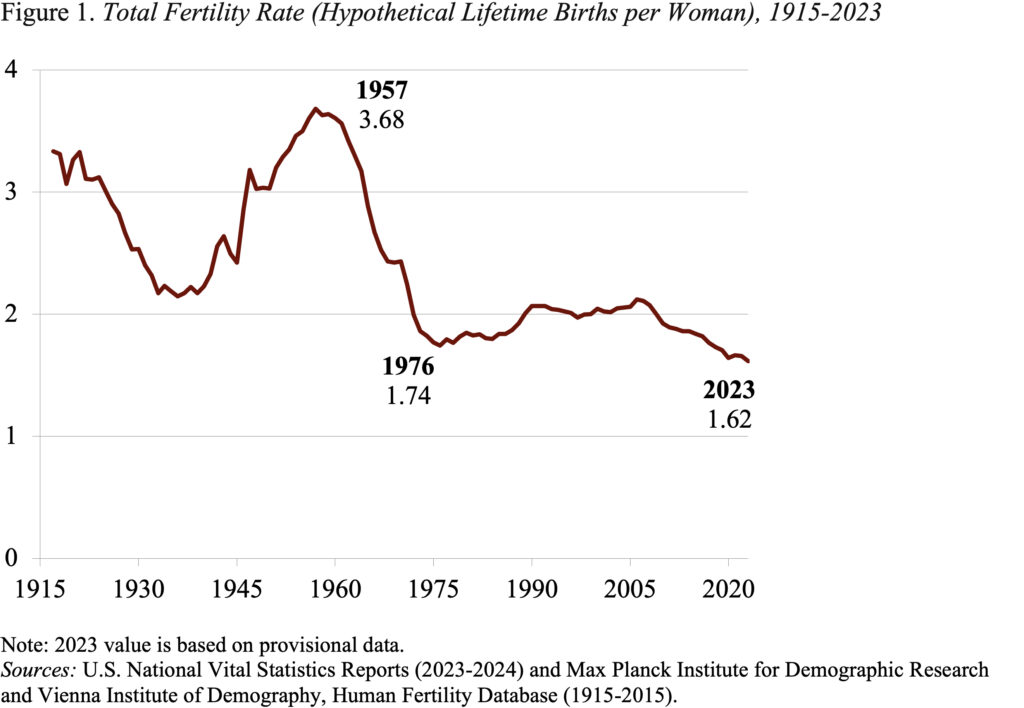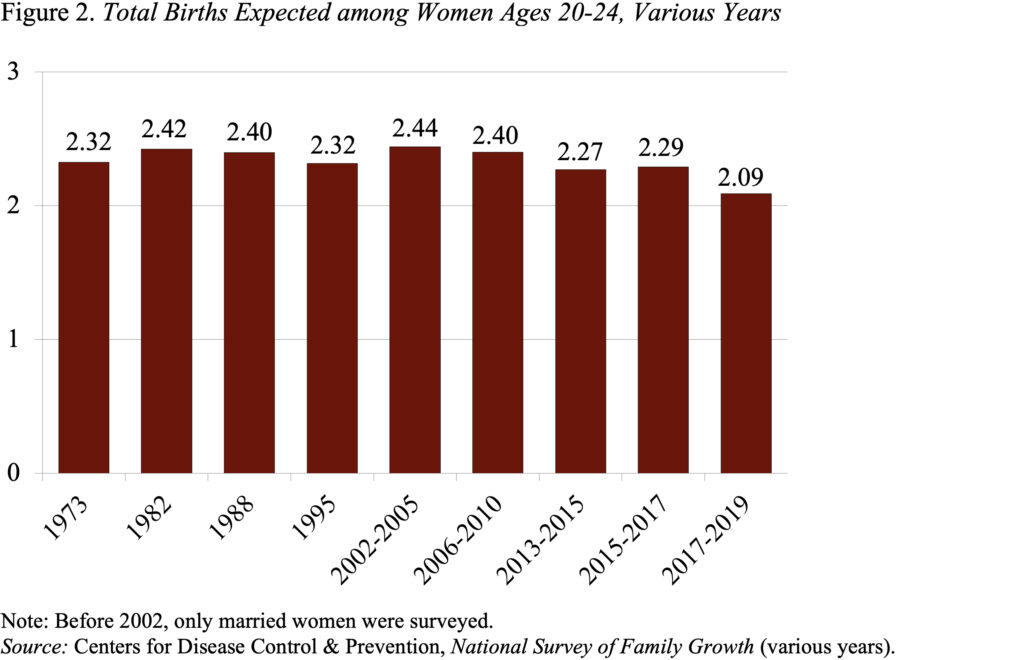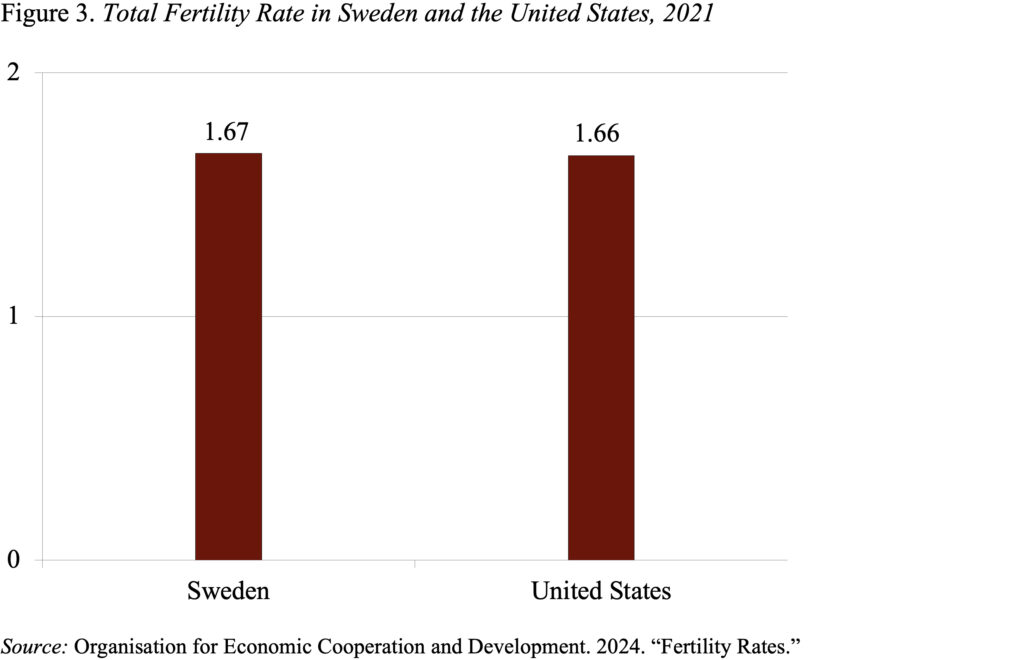Insurance policies tried by nations like Sweden would possibly stop the fertility charge from falling additional.
The decline within the fertility charge is a major improvement, not simply within the U.S. however world wide. Some laud the pattern for example of girls’s potential to regulate their future; others decry it as an financial disaster. No matter one’s views, at present ranges of fertility, the world’s inhabitants is projected to peak within the 2060s after which begin to decline, which might not be such an excellent factor.
Within the U.S., fertility charges have usually been falling because the finish of the infant increase within the mid-Nineteen Sixties, and that decline accelerated after the Nice Recession. Many observers thought that when the economic system recovered, the fertility charge would rebound. Clearly, it has not (see Determine 1). To me, this isn’t a shock. My colleague Angie Chen and I discovered in 2018 that the downward pattern might be defined by underlying components – significantly, the rise in ladies’s schooling and earnings – that weren’t prone to reverse. In 2023, the fertility charge was 1.62, an all-time low and method beneath that wanted to keep up the present inhabitants.

Apparently, survey knowledge recommend that ladies of their 20s nonetheless count on to have greater than two youngsters (see Determine 2), albeit fewer than in earlier surveys. The massive disconnect between expectations and births signifies that one thing is making it troublesome to turn into a father or mother. Clearly individuals are getting married lots later; in 2023, the median age of first marriage for girls was 28 – about 6 years later than within the early Nineteen Eighties. Potential mother and father additionally could wish to attain different milestones earlier than having a toddler, corresponding to paying off scholar debt or shopping for a home. That is smart given the large value of childcare.

All these issues appear very American, nevertheless, so I used to be curious about what was occurring in different nations, the place authorities insurance policies are extra benevolent. I used to be significantly curious about Sweden, the place the federal government appears to have carried out all the things doable to assist new households.
- Parental Go away: 480 days per little one, with every father or mother entitled to 240 days.
- Monetary Help: For the primary 390 days, compensation relies on a father or mother’s revenue as much as a cap, and for the remaining 90 days, a hard and fast quantity (roughly $17) per day
- Versatile Work Preparations: Upon returning to work, mother and father could cut back their hours to 75 p.c or extra till the kid turns eight.
- Youngster Sick Go away: Dad and mom are entitled to as much as 120 days of depart per little one per 12 months.
- Childcare and Preschool: Backed childcare and free preschool from ages one to 6.
- Common Healthcare: Maternal care and little one healthcare companies are free.
- Schooling: Free major, secondary, and higher secondary schooling.
All these provisions sound pretty in comparison with the U.S.; mother and father bear virtually no monetary prices related to having youngsters, and the office seems very accommodating. So how do Swedish fertility charges examine with these within the U.S.? Knowledge for 2021 present that they’re equivalent (see Determine 3).

That identification doesn’t imply that Sweden has purchased nothing with its beneficiant parental insurance policies. Since 2000 – when many of those insurance policies had been launched – Sweden’s fertility charge elevated from 1.55 to 1.67, whereas the speed within the U.S. declined from 2.06 to 1.66. Additional, the labor drive participation charge for girls in Sweden is 88 p.c in comparison with solely 75 p.c within the U.S.
The Swedish outcomes do recommend that it is extremely, very troublesome for the federal government to extend the fertility charge. That stated, we might attempt to make it slightly simpler for girls to each work and have youngsters. Such efforts could stop the fertility charge from falling additional.

